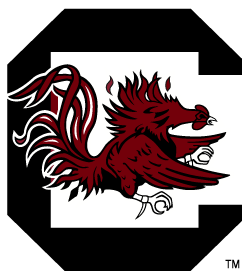Feb. 21, 2017

Putting in countless hours of hard work is nothing new for South Carolina women’s tennis. Now they’re working smarter. The Gamecocks not only use the latest training methods to help the student-athletes reach their potential, but also the latest technology. This includes special monitors worn by the student-athletes to measure heartbeat analytics in order to determine better balance for workouts and recovery time.
“It monitors the athlete’s heart rate and workload,” said assistant coach Jeff Nevolo of the Firstbeat technology. “It’s about the training effect and the training load. It’s all related to heart rate conditioning. We have always worked really hard. The biggest benefit to us is that it gives us a readout of just how hard their workouts are on their bodies for each person as an individual.

“It keeps us from over-training. We’re concerned about the health and the safety of the student-athletes while also working like professionals.”
Used by several sports at South Carolina, the student-athletes wear a small strap around their chest which sends data to a computer, showing not only how hard he or she is working, but also whether their bodies can endure more physical stress or if they need rest.
“It gives us a really great readout of just how hard we’re working in a given week,” Nevolo said. “It takes a lot of the guesswork out. It assigns a value based on a workout and gives us the training effect. It tells us if they’ve worked out too hard. It can also tell us after a match, whether we need to give them a couple of days off.
“There’s also a test that we run that gives us a percentage of recovery. We’ve seen players the day after matches only 4 percent recovered. So practice is going to change a lot if you’re only 4 percent recovered. This system has given us the confidence to rest more and to know that it’s productive rest.”
The coaches understand that the same workout can have different effects on each student-athlete, and that training and recovery is not a one-size fits all approach.
“We’re not generalizing the workload on everybody,” Nevolo said. “We’re seeing that it really effects everybody differently. This gives us a rhythm of training for each week so we know how much we have to push, and also really know how much we need to rest.”
“With how long our season is, it really helps to be able to manage how we rest,” said senior Brigit Folland. “It’s the small differences that can make a big difference.”
This helps us find a balance so we can improve.
Hadley Berg
Because the devices don’t restrict any range of motion and are not cumbersome, the Gamecocks use the technology during practice as well as matches.

“It’s really cool to see the level we’re at, and our coaches have gotten really good at seeing when something is off,” said junior Hadley Berg. “So we can base our training upon how our bodies are feeling. We know we can have a super intense practice one day, and if we don’t all fully recover, then we go a little lighter the next day.”
“What I’m interested in is seeing how long it takes us to recover after a tough SEC match,” Nevolo said. “The level of physicality is so hard. Last year, we may have pushed too hard at times. We’ve learned that you need to work hard, but you also need to rest hard as well, so to speak. It gives us a better idea of where we are physically as a whole.”
The results can change the length of practice and the amount of energy the coaches will try to get out of the student-athletes on a particular day, especially after playing a pair of tough SEC matches on a Friday and Sunday.
“We might come back from the SEC matches and say the first day will just be a serves and returns day,” Nevolo said. “Or we might just work on things that don’t require them to run around for two hours, so we can just shore up some technical things and still be productive that day. One of the biggest differences now is that we see it takes a lot more than two days for some of the girls to recover. Monday rest doesn’t mean 100 percent exertion the first day back after a long weekend playing two SEC matches.”
“With a full season, you can’t have 100 percent insane workouts every day,” Berg said. “It’s not going to get you any better. This helps us find a balance so we can improve.”
Nevolo acknowledged that the idea of more rest can go against the “old school” approach of constant exertion.
“The science of recovery has improved tremendously,” Nevolo said. “It’s counter-intuitive to what a lot of us learned when we were younger, but we’re seeing players last longer with this. There’s a tendency to just want to work hard over and over. Some people feel if you’re not doing that, then you’re not getting ready. We’ve found that our approach this year is working. We didn’t push them too hard last week, and we were able to win five three-set matches against Clemson. I think we were definitely fresh for the match.”
In addition to several other South Carolina programs, more and more professional sports organizations are using this technology as well.












